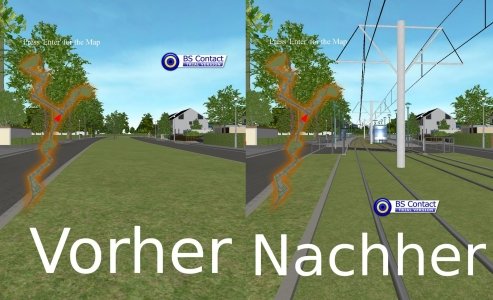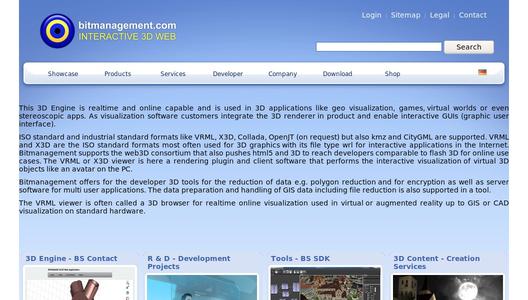That civic participation set clearly precedent, proves the city of Mannheim in these days and its local traffic authority the Rhein-Neckar-Verkehr GmbH in a considerable way. The newsworthy project is related to the city rail way system in the North of Mannheim. It will start at Friedrich-Ebert-Straße und ends 6.4 km away at railway Station "Am Karl-Benz-Bad". See details under http://www.stadtbahn-mannheim-nord.de/infomaterial/3d-visualisierung.html. To enable citizens to be deeply involved in that huge project the city authorities awarded a contract to 3D Software provider Bitmanagement Software GmbH in Bavaria, Germany, to model the entire distance of assets and planed project in 3D technology. Main part of the order is to enable users to switch from the current state to the planning, each in high resolution imaging. It also should allow users to engage in the project in the Internet. Due to the fact that the technology from Bitmanagement is scalable the online distribution can be remarkably enhanced. One of the highlights will be the complexity and the high level of details of the project.
The traffic project also provides users with a sophisticated navigation tool for interacting with the project. Therefore a blended dashboard helps the user to make his choice between different navigation possibilities. So he may choose different viewpoints from where he can observe the planned distance, also in an emotionally way. In another modus the user can act as pedestrian walking from one place to another location. The user also may experience the project virtually as a city railway passenger in the 3D model to get again different impressions. Based on all these features the planning model of the traffic project might belong to the largest virtual projects and in terms of level of details one of the most interesting and insightful development plans and adds yet another prove of leading 3D visualization technology "made in Germany". In addition to the 3D model the city of Mannheim makes different montages available to the users of "before and after" status. Also a number of 2D images of construction sections and layouts belong to the extensive information material.
Against the background of huge projects like the new Central Station of Stuttgart (Stuttgart 21) or the new airport Berlin-Brandenburg, just being mentioned as examples for financially risky construction projects, the initiators count on realistic chances for the Mannheim traffic project. Not only enabled to save money and time, but also to fulfill all obligations and to gain high acceptance by offering the 3D modeling of the public planning. And -last but not least -the advantage of reaching all interested citizens in the internet. The realistic 3D presentation, the walkthrough feature, the broad online distribution and the high rendering quality which the state of the art 3D technology today allows to use all these feature even on popular Laptops etc., demonstrate clearly the economic and political benefits.
A similar but more marketing effect can be recognized from citizens regarding 3D models of soccer stadiums. Such virtual arenas become a huge platform for strengthening marketing efforts. Whether the sales of tickets or souvenirs, events others than soccer matches, or background advertising - in each case 3D technology increasingly supports marketing activities. A most recent example is the Veltins Arena from the traditional Sports-Club Schalke 04, which has provided Bitmanagement with the order for modeling the stadium and now has awarded the software provider with a follow up order. Schalke 04 intends to expand its marketing tool by implementing additional features, e.g. animated avatars.


